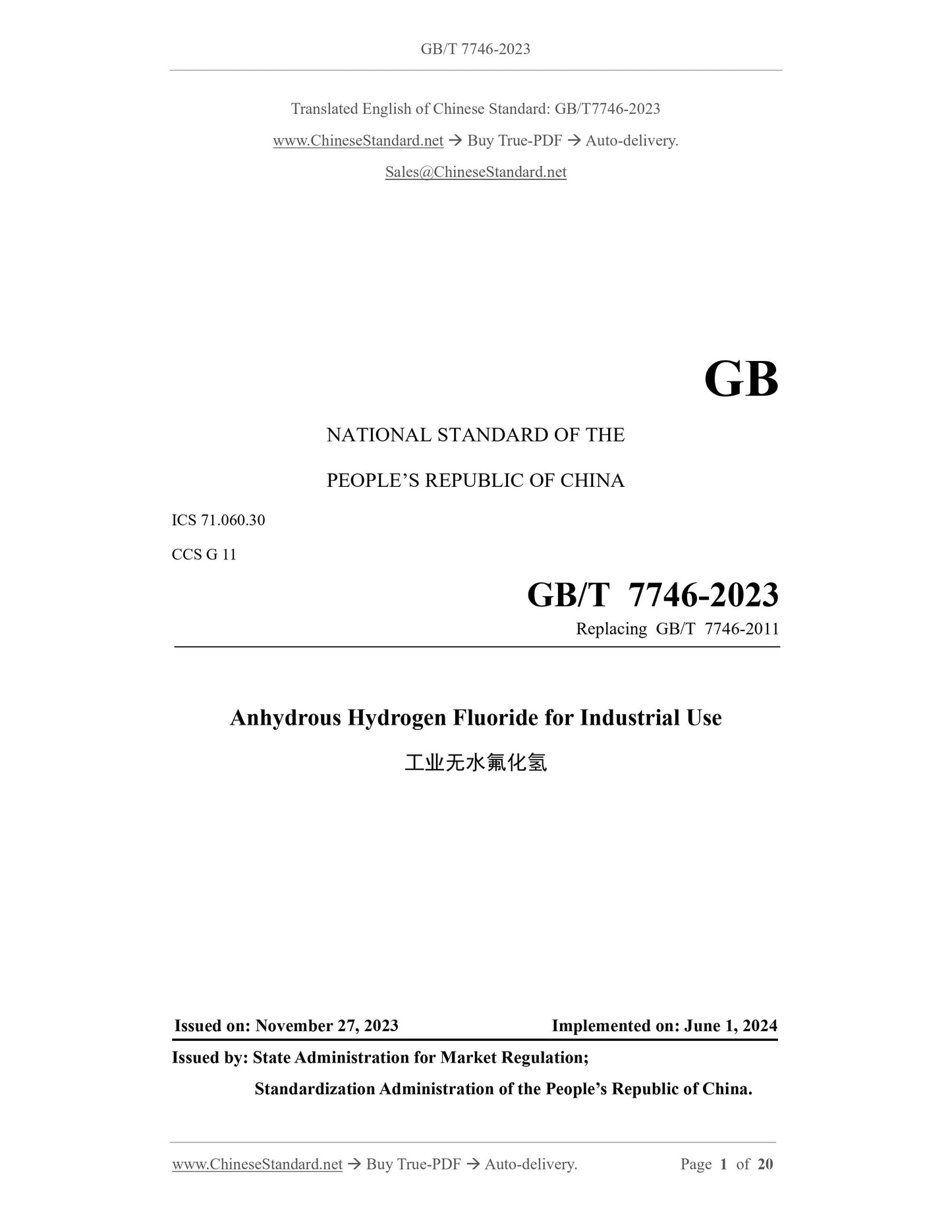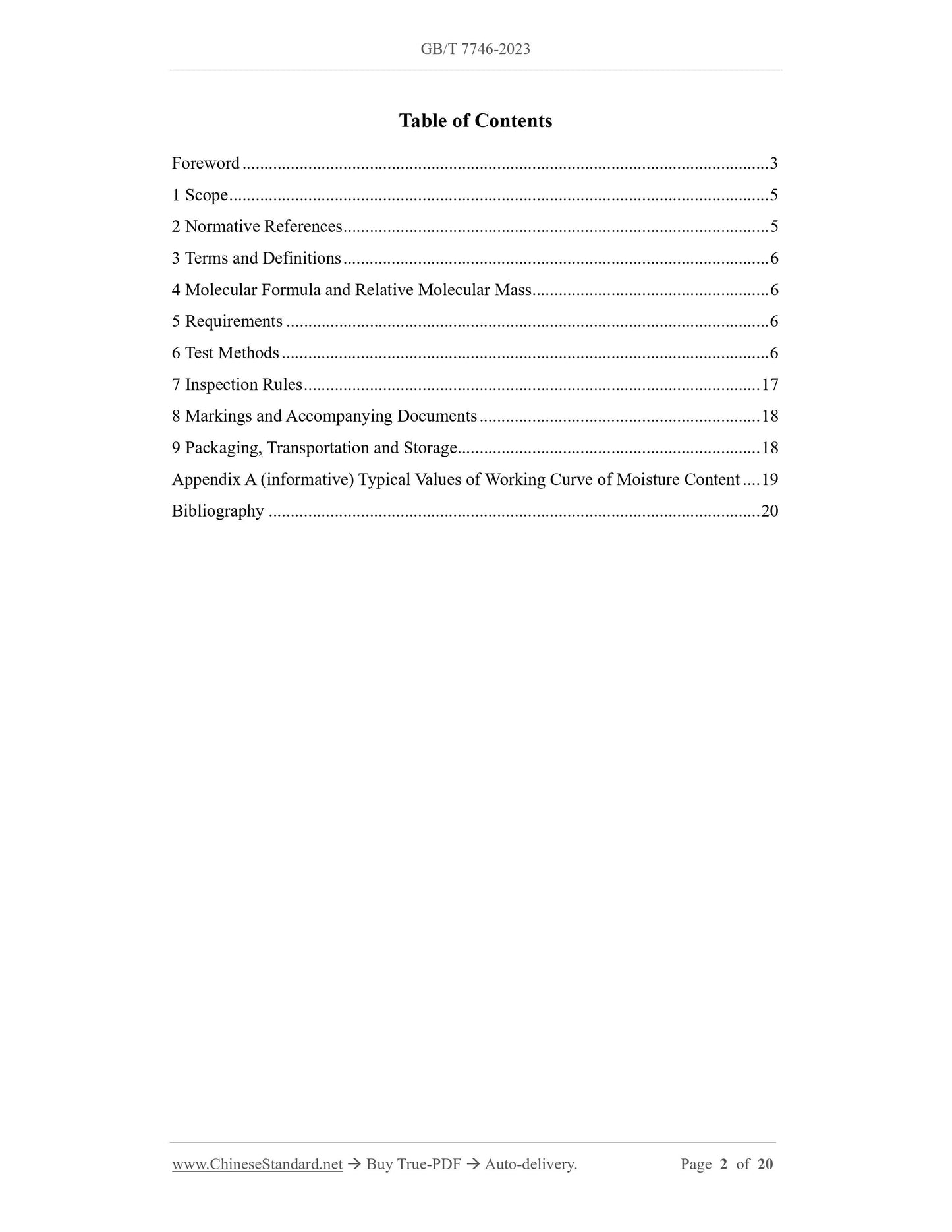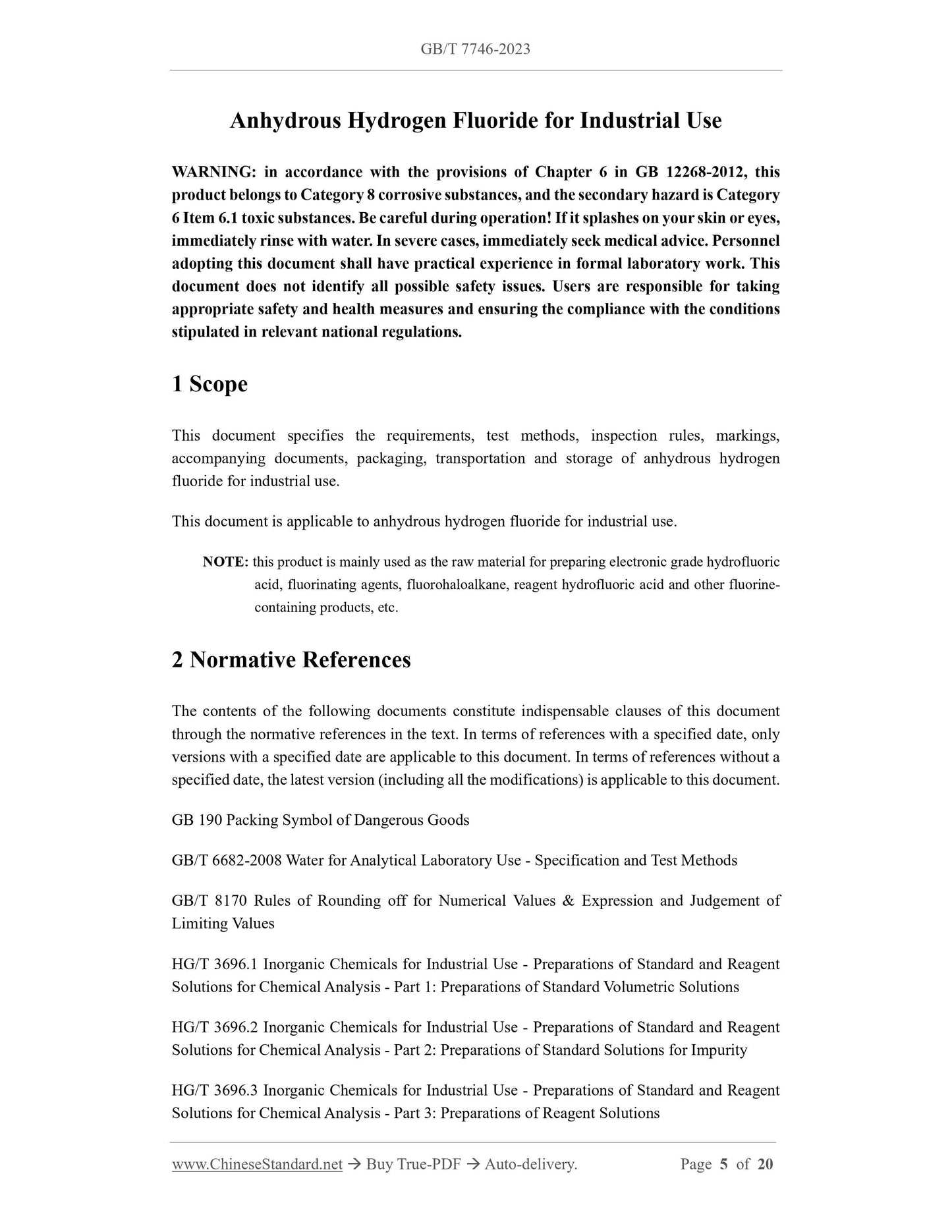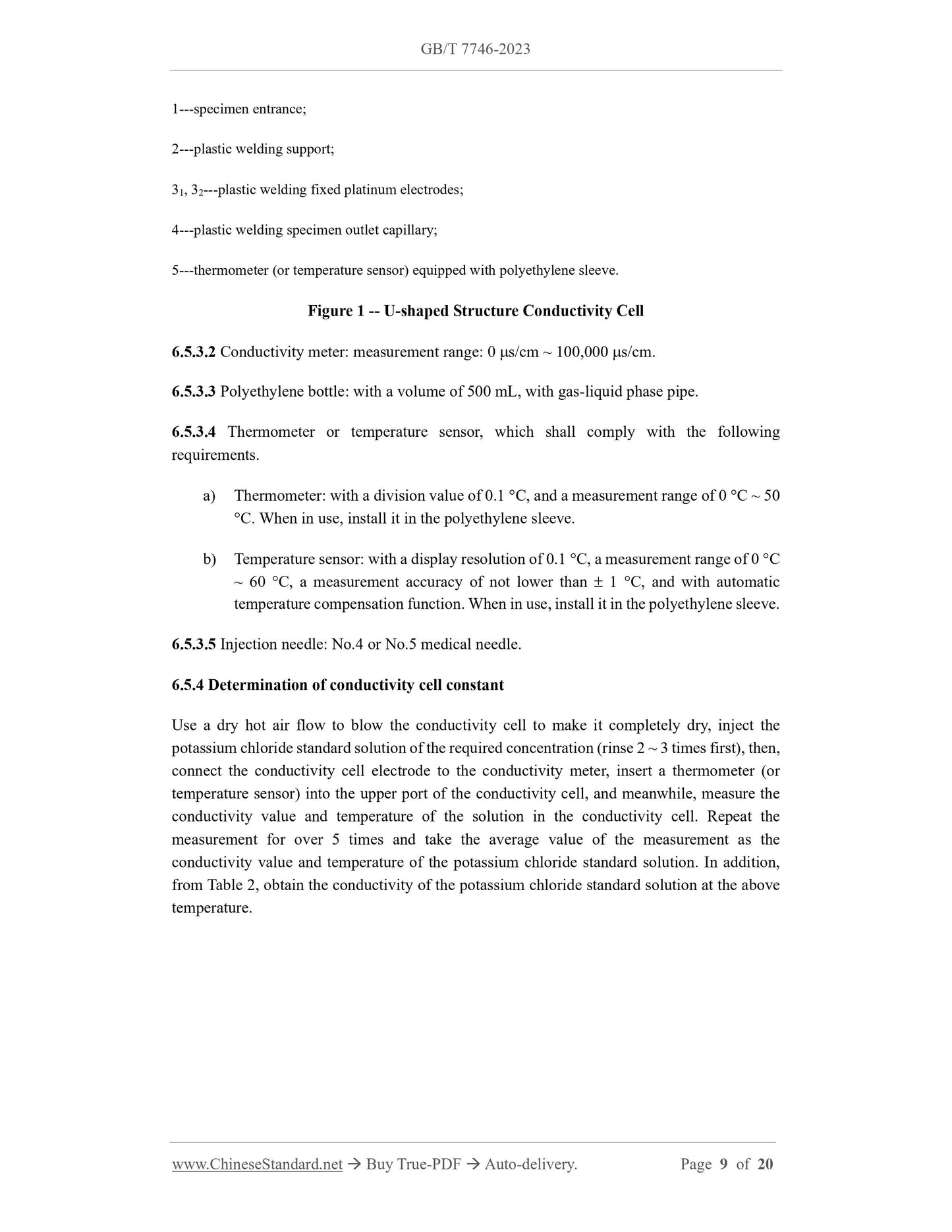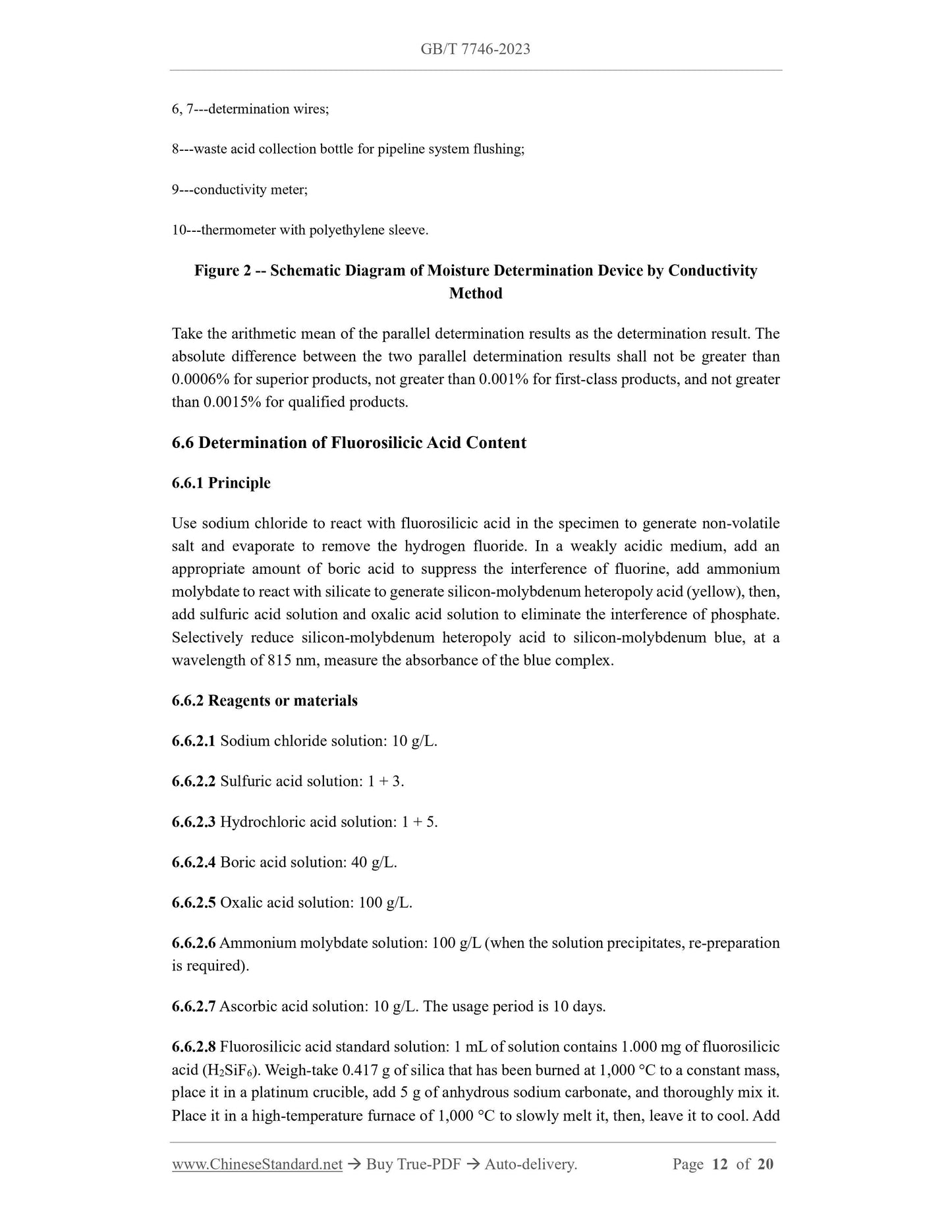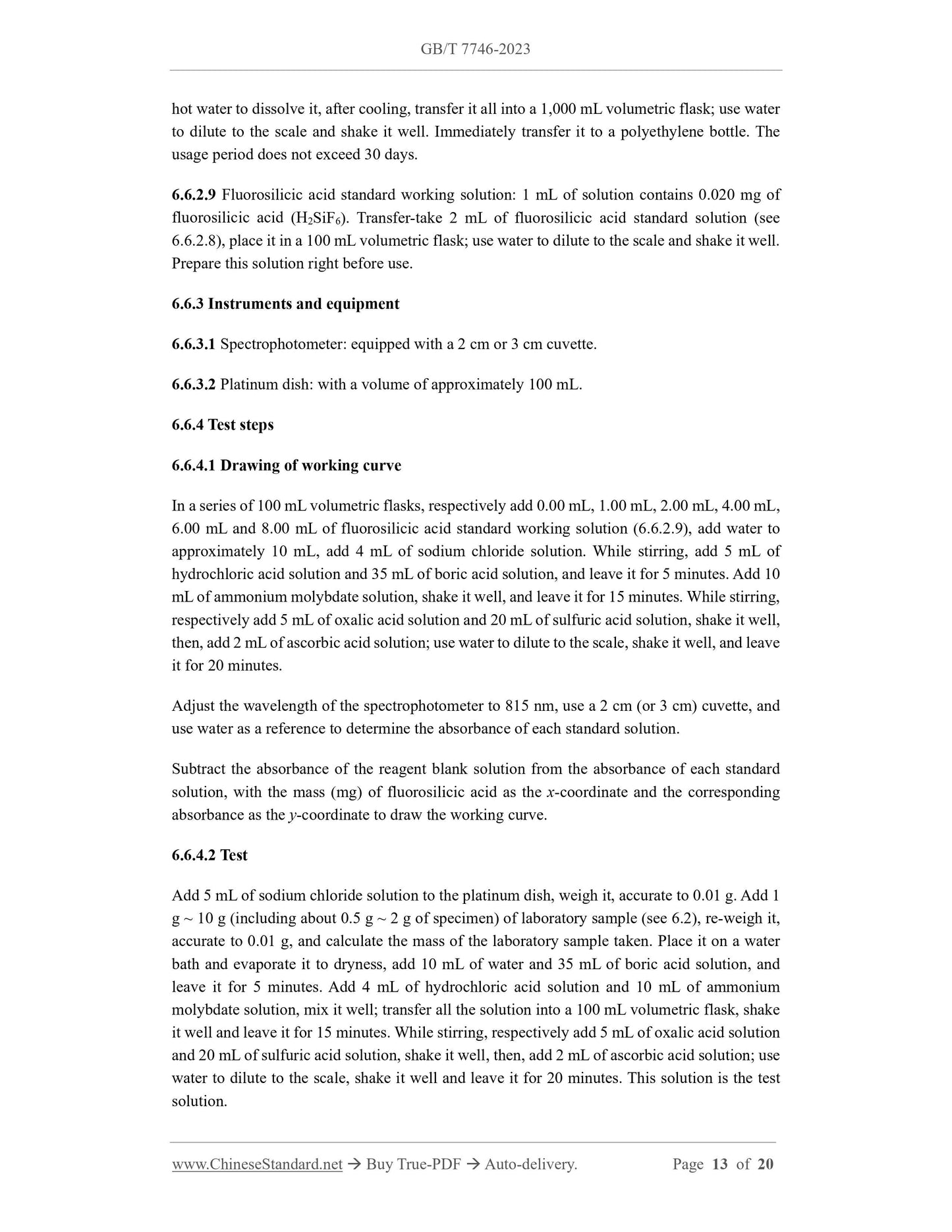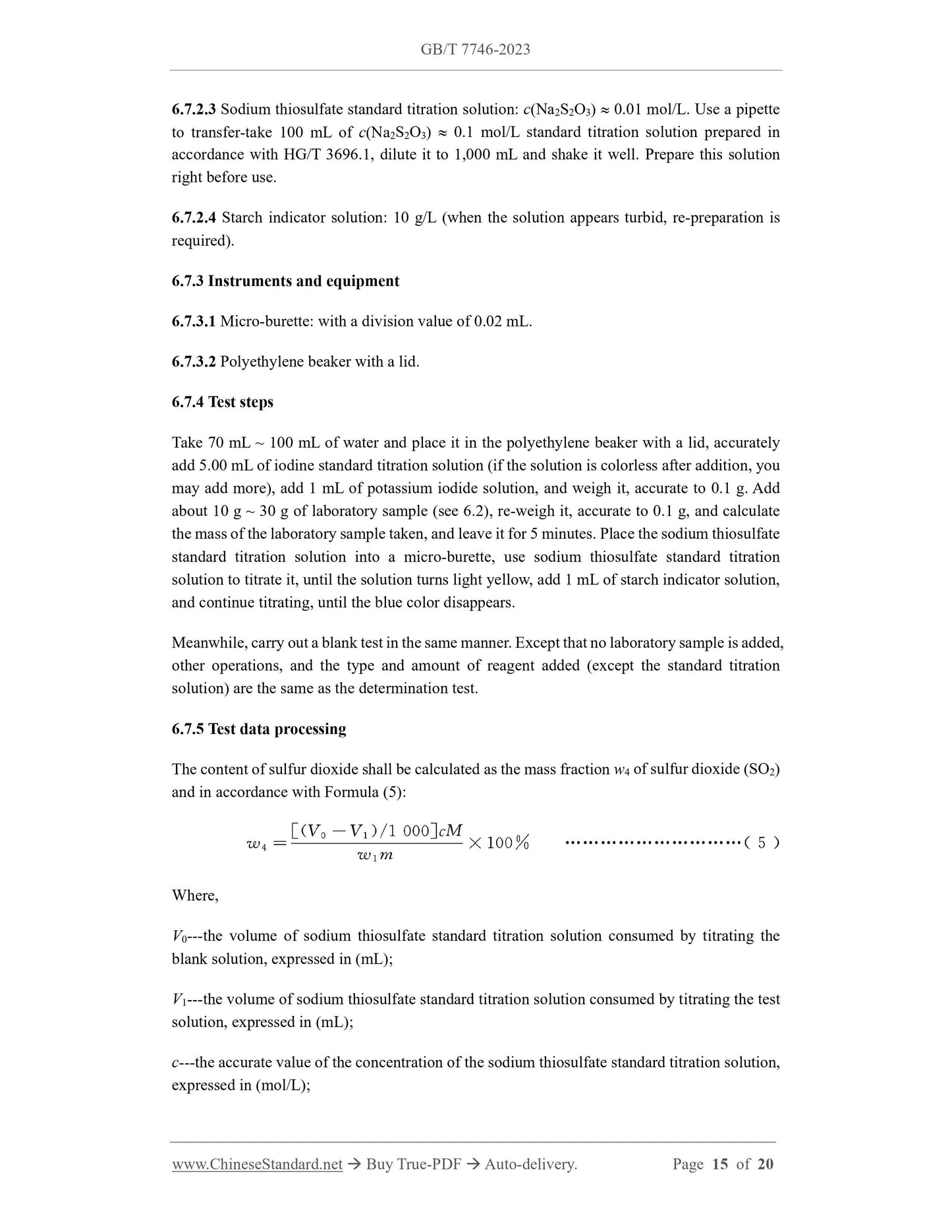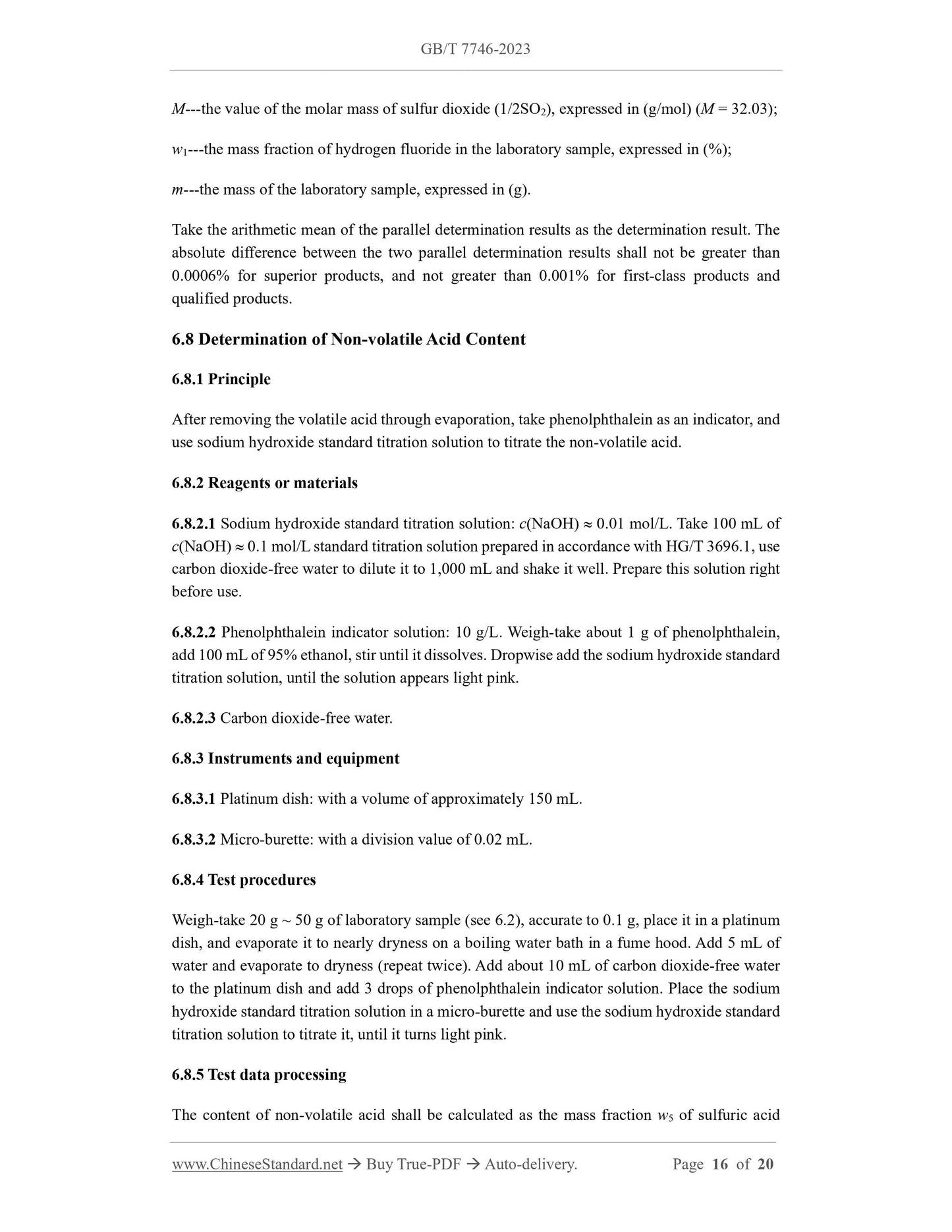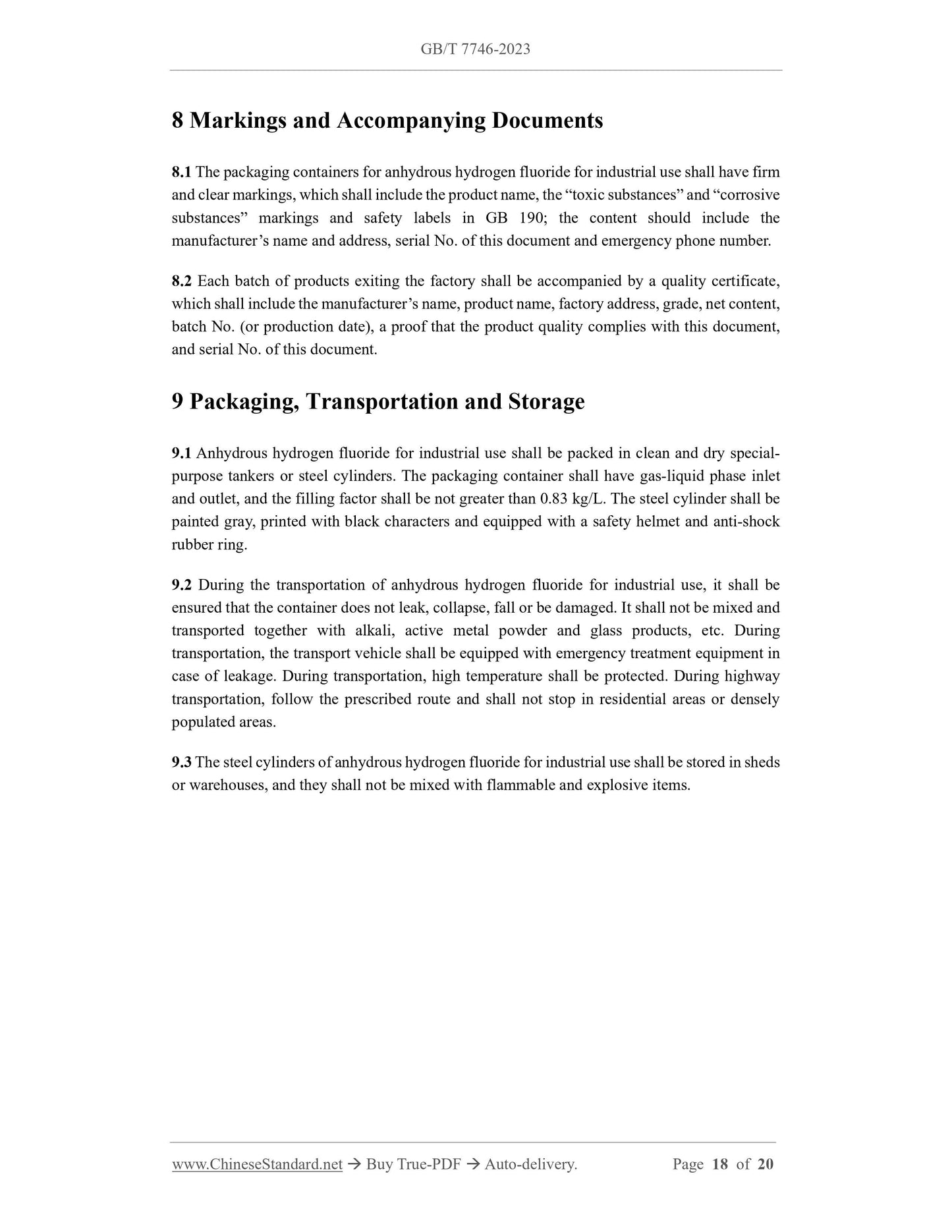1
/
of
9
www.ChineseStandard.us -- Field Test Asia Pte. Ltd.
GB/T 7746-2023 English PDF (GB/T7746-2023)
GB/T 7746-2023 English PDF (GB/T7746-2023)
Regular price
$235.00
Regular price
Sale price
$235.00
Unit price
/
per
Shipping calculated at checkout.
Couldn't load pickup availability
GB/T 7746-2023: Anhydrous hydrogen fluoride for industrial use
Delivery: 9 seconds. Download (and Email) true-PDF + Invoice.Get Quotation: Click GB/T 7746-2023 (Self-service in 1-minute)
Newer / historical versions: GB/T 7746-2023
Preview True-PDF
Scope
This document specifies the requirements, test methods, inspection rules, markings,accompanying documents, packaging, transportation and storage of anhydrous hydrogen
fluoride for industrial use.
This document is applicable to anhydrous hydrogen fluoride for industrial use.
NOTE. this product is mainly used as the raw material for preparing electronic grade hydrofluoric
acid, fluorinating agents, fluorohaloalkane, reagent hydrofluoric acid and other fluorine-
containing products, etc.
Basic Data
| Standard ID | GB/T 7746-2023 (GB/T7746-2023) |
| Description (Translated English) | Anhydrous hydrogen fluoride for industrial use |
| Sector / Industry | National Standard (Recommended) |
| Classification of Chinese Standard | G11 |
| Classification of International Standard | 71.060.30 |
| Word Count Estimation | 14,142 |
| Date of Issue | 2023-11-27 |
| Date of Implementation | 2024-06-01 |
| Older Standard (superseded by this standard) | GB/T 7746-2011 |
| Issuing agency(ies) | State Administration for Market Regulation, China National Standardization Administration |
Share
